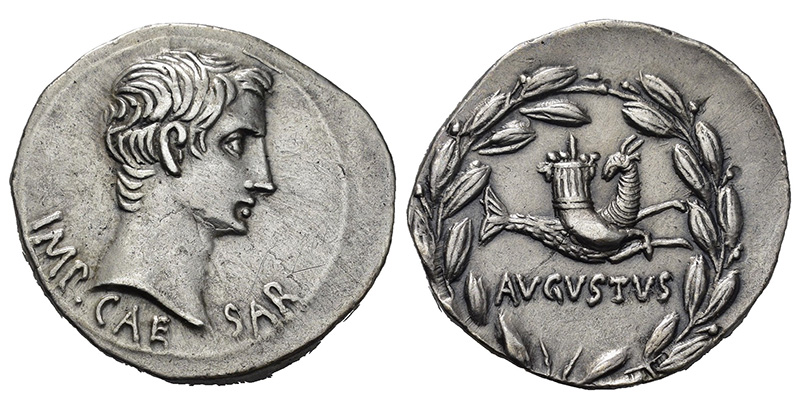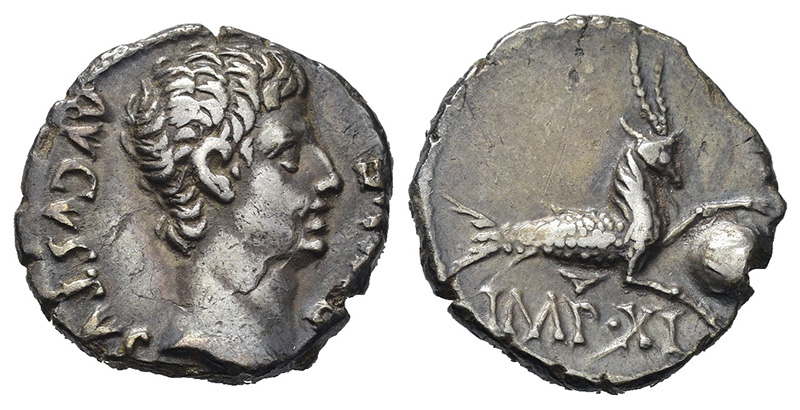Horoscopes and Politics: Augustus Coins and Capricorn

- Cistophorus showing the head of Augustus; Capricorn with cornucopia and laurel wreath. Minted in Ephesus in 25-20 BCE.
- KM 1991.02.0319, Kelsey Museum, University of Michigan.

- Denarius showing the head of Augustus; Capricorn with globe. Minted in Lugunum (Lyon, France) in 12 BCE.
- KM 1991.02.0320, Kelsey Museum, University of Michigan.
These are two coins minted by Augustus (emperor: 27 BCE-14 CE). They both display Capricorn on one side (while the other side has a portrait of Augustus himself, as typical of coin minted by rulers). In one coin (KM 1991.02.0319) (see the first image), a cistophorus minted in Pergamum in 27-26 BCE, Capricorn holds a cornucopia, a sign of good fortune and prosperity. In the other one (KM 1991.02.0320) (see the second image), a denarius minted in Colonia Patricia in 18-17 BCE, Capricorn holds a globe, to suggest that the universe is now part of the Roman Empire, with the name AUGUSTUS written underneath.
Coins minted by August often have Capricorn, which has long puzzled scholars (starting with Kepler), because Capricorn was not Augustus’ zodiacal sign, as he was born on September 23, so his sign was Libra. Yet for some scholars Capricorn was the sign of his conception (which must have happened in December). Regardless of the origin of Capricorn in Augustus’ iconography, Capricorn became an important symbol of Augustus’s power. This is the sign that marks the beginning of the new year, so it symbolized the beginning of a new era under Augustus’ rule.
The political use of astrology by Augustus is confirmed by his publication of his own (favorable) horoscope with an edict. Using astrological symbols for political propaganda become a staple of Roman emperors, who will use the symbol of Capricorn until the third century CE as an imperial symbol.
By using astrology in his own propaganda, Augustus also sanctioned the popularity of this discipline, which eventually became a staple of Roman culture, as the many papyri with horoscopes and astrological tables testify to. In addition, Manilius (1st century CE) wrote an entire poem, the Astronomica, on astrology and dedicated it to the emperor.
Select Bibliography
- Barton, Tamsyn. 1995. “Augustus and Capricorn: Astrological Polyvalency and Imperial Rhetoric.” The Journal of Roman Studies 85: 33-51.
- Dwyer, Eugene Joseph. 1973. “Augustus and the Capricorn.” Mitteilungen des Deutschen Archäologischen Instituts, Römische Abteilung = Bullettino dell’Istituto Archeologico Germanico, Sezione Romana 80: 59-67.

